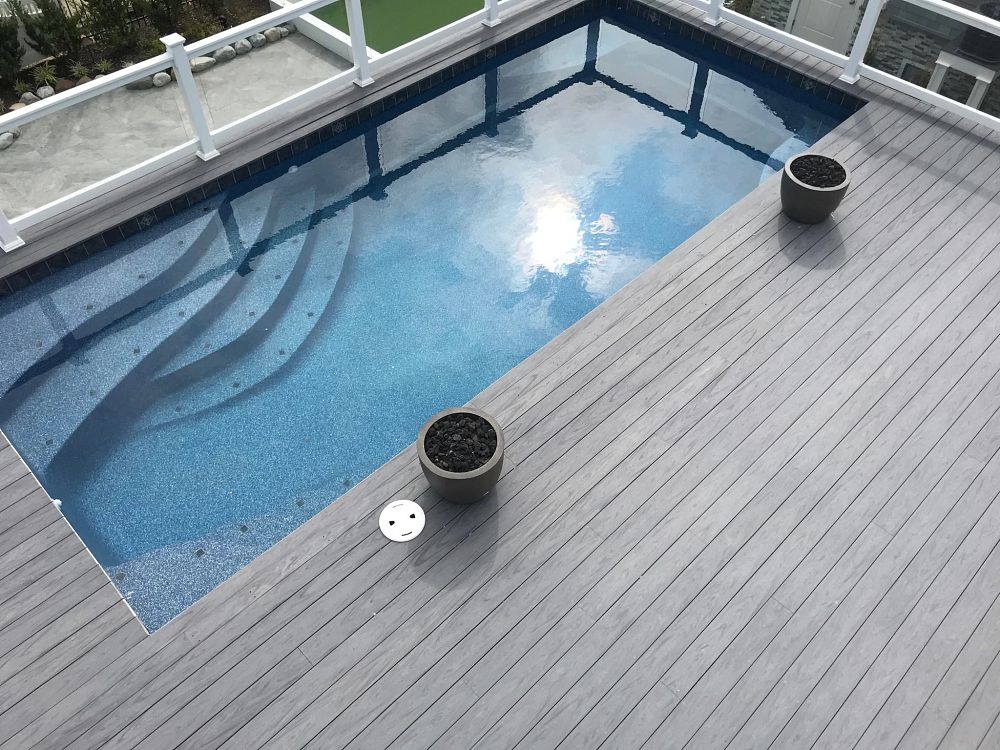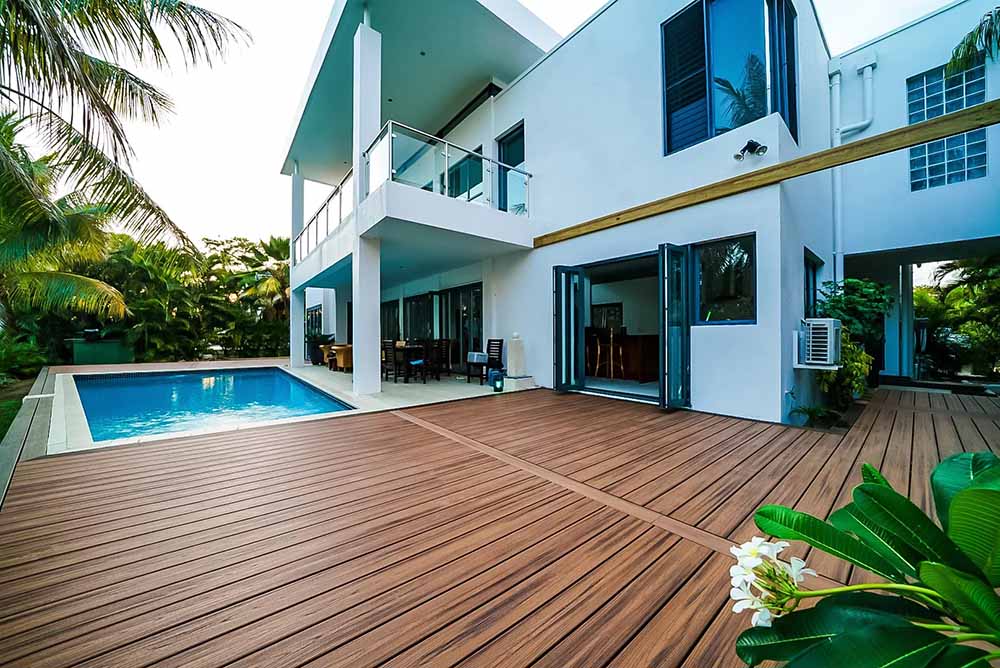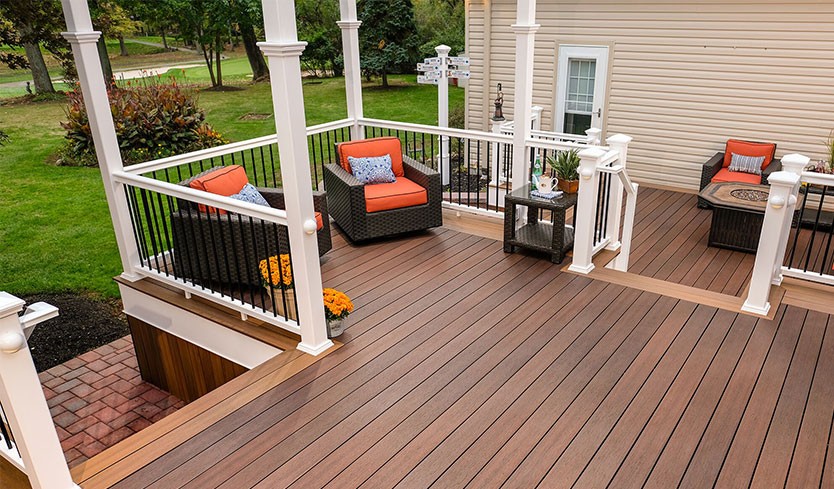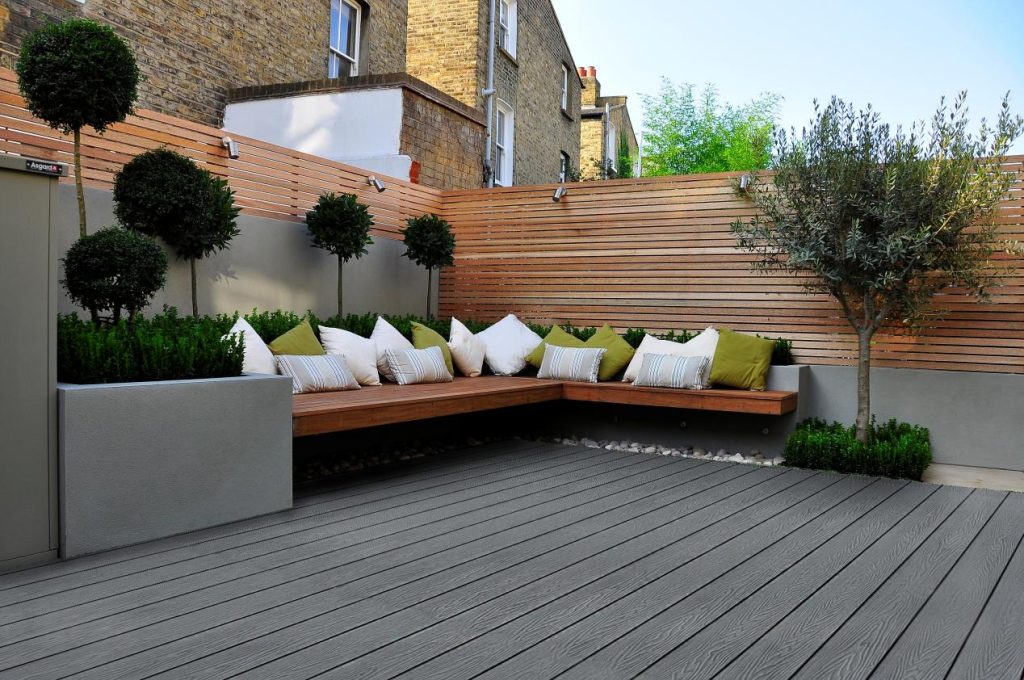
When it comes to outdoor materials, WPC wood plastic composite has long struggled with issues such as quick aging, discoloration, and poor weatherability. This has led to high maintenance costs, a lack of variety in colors and designs, and even credit crises due to material-related problems in landscaping projects.
Introducing a game-changer: Polymethacrylate Co-extruded WPC Wood Plastic Composites. These innovative materials tackle the shortcomings of their predecessors head-on. Known by its chemical name polymethylmethacrylate (PMMA) or simply acrylic, this thermoplastic offers exceptional chemical stability, weather resistance, and the added benefit of easy dyeing without fading – a true game-changer in the industry.
The production process of these new types of WPC wood composites involves using two extruders: one for the plastic wood substrate and another for the co-extruded material. Through simultaneous extrusion using a co-extrusion mold, these materials can be molded and processed into fully encapsulated plastic wood products in a single step. The results are astonishing. From decking and stools to columns and more, these products boast a cladding layer structure that brings UV resistance, mechanical strength, chemical stability, and weather resistance to new heights. The benefits don’t stop there – they’re easy to dye, offering a myriad of color options to match any outdoor aesthetic.
The Advantages of New Type Polymethacrylate Co-extruded WPC Wood
One of the most remarkable advantages of Polymethacrylate Co-extruded Wood Plastic Composites is their long-lasting stability. These materials exhibit superior anti-aging properties, impact resistance, and strength. The internal molecular structure is dense, giving them a significant load force and deformation resistance advantage over traditional materials. In water-rich environments, they truly shine – with a water absorption rate of just 0.2%, they resist swelling, deformation, and even mildew.
The benefits of these composites extend to their application ease. They can be effortlessly shaped and assembled using standard fasteners, allowing for modular construction in a variety of projects. From outdoor decoration and landscaping to patio flooring and architectural curtain walls, these materials redefine what’s possible in the world of outdoor design.
Moreover, these composites are an eco-conscious choice. With low resource consumption, pollution-free production, and the ability to be recycled and reused, they align perfectly with the demands of the twenty-first century. Their versatility spans across various industries, making them an ideal replacement for traditional wood, plastics, stone, and ceramics.
So, if you’re dreaming of an outdoor space that stands the test of time, look no further than Polymethacrylate Co-extruded Wood Plastic Composites. With their exceptional durability, aesthetic appeal, and environmental friendliness, they’re paving the way for a new era in outdoor design. Whether it’s a bustling urban landscape or a tranquil coastal retreat, these materials are the key to a vibrant and enduring outdoor experience. Embrace innovation, embrace durability, and embrace the future of outdoor living.









